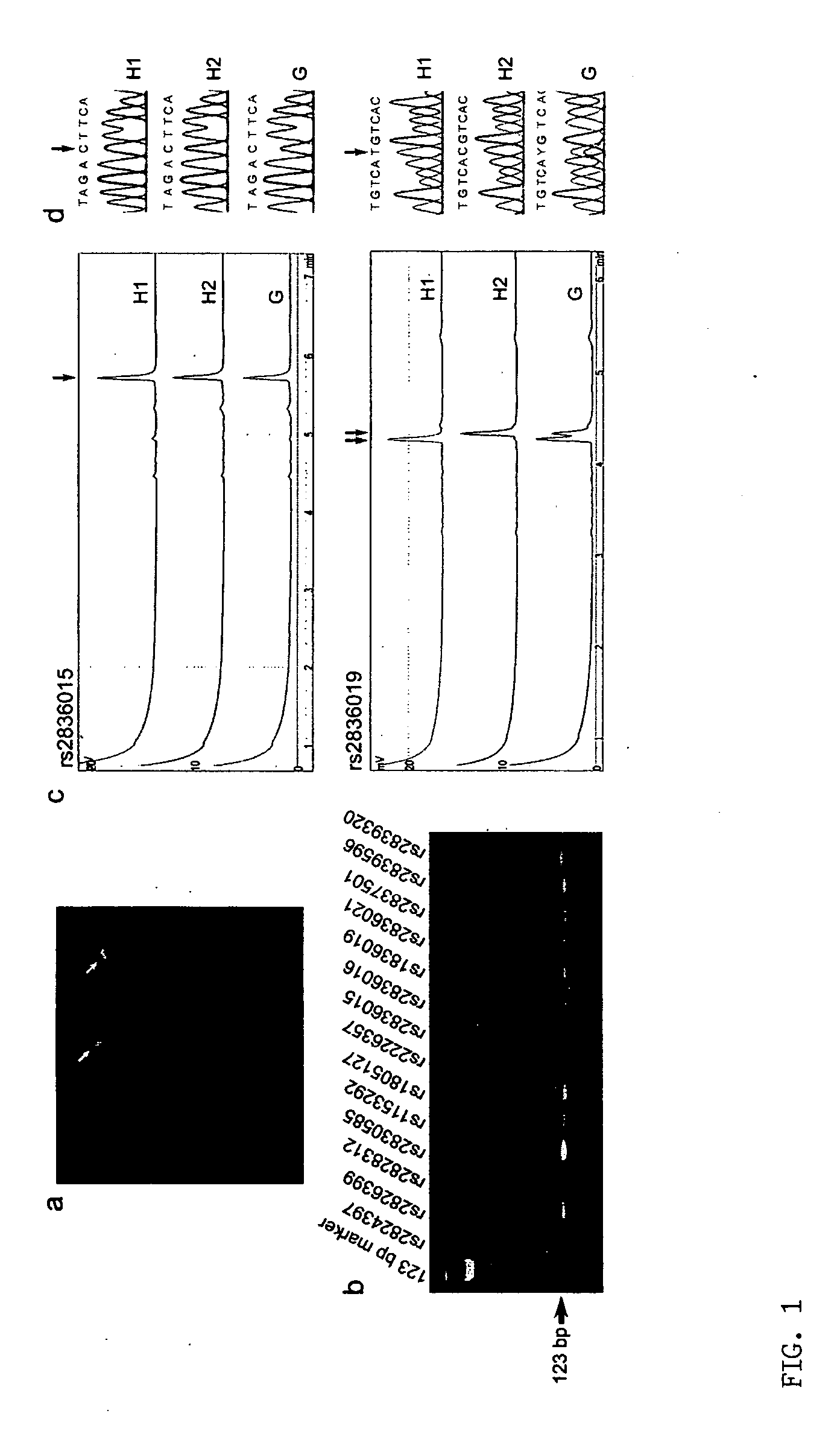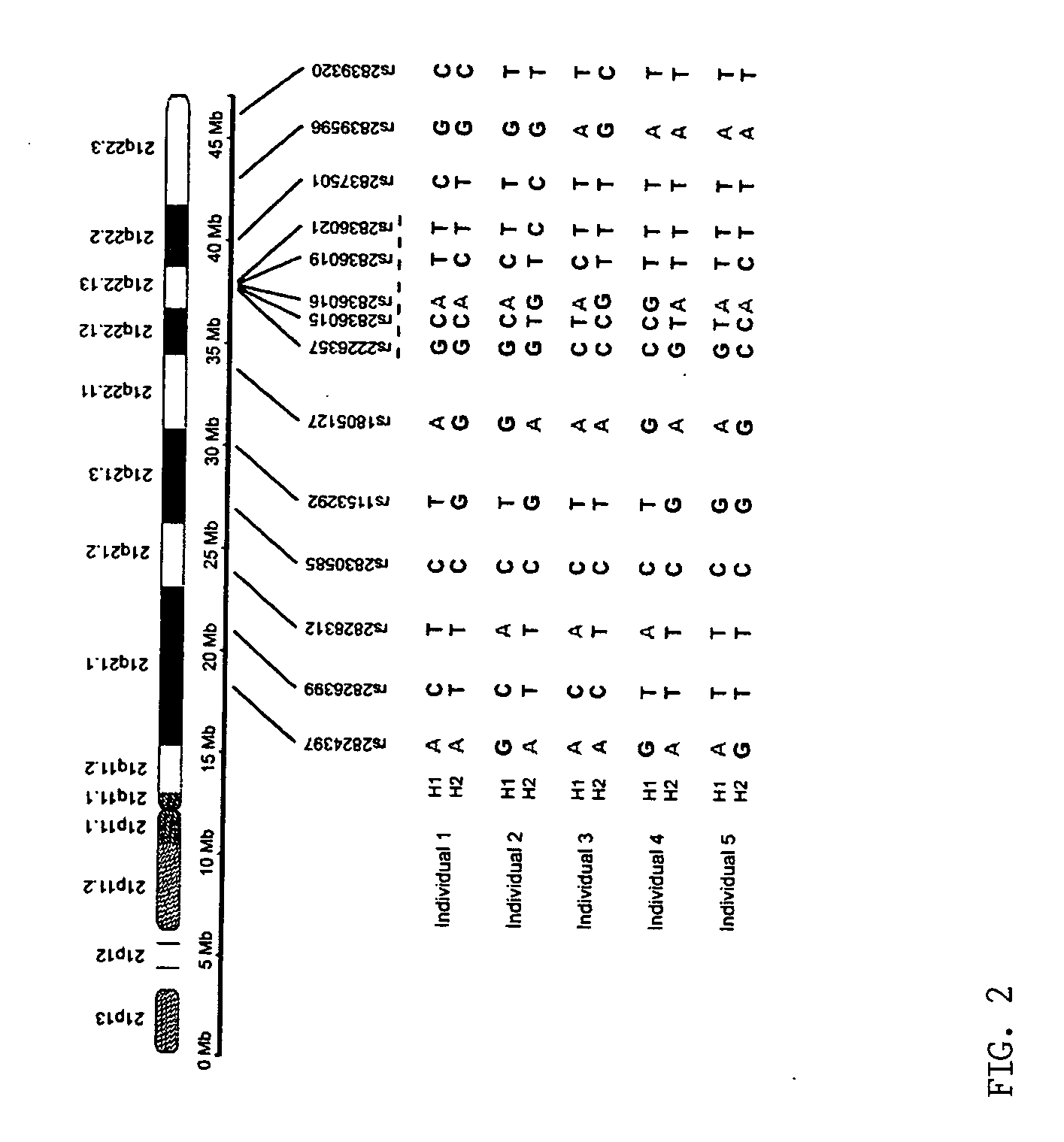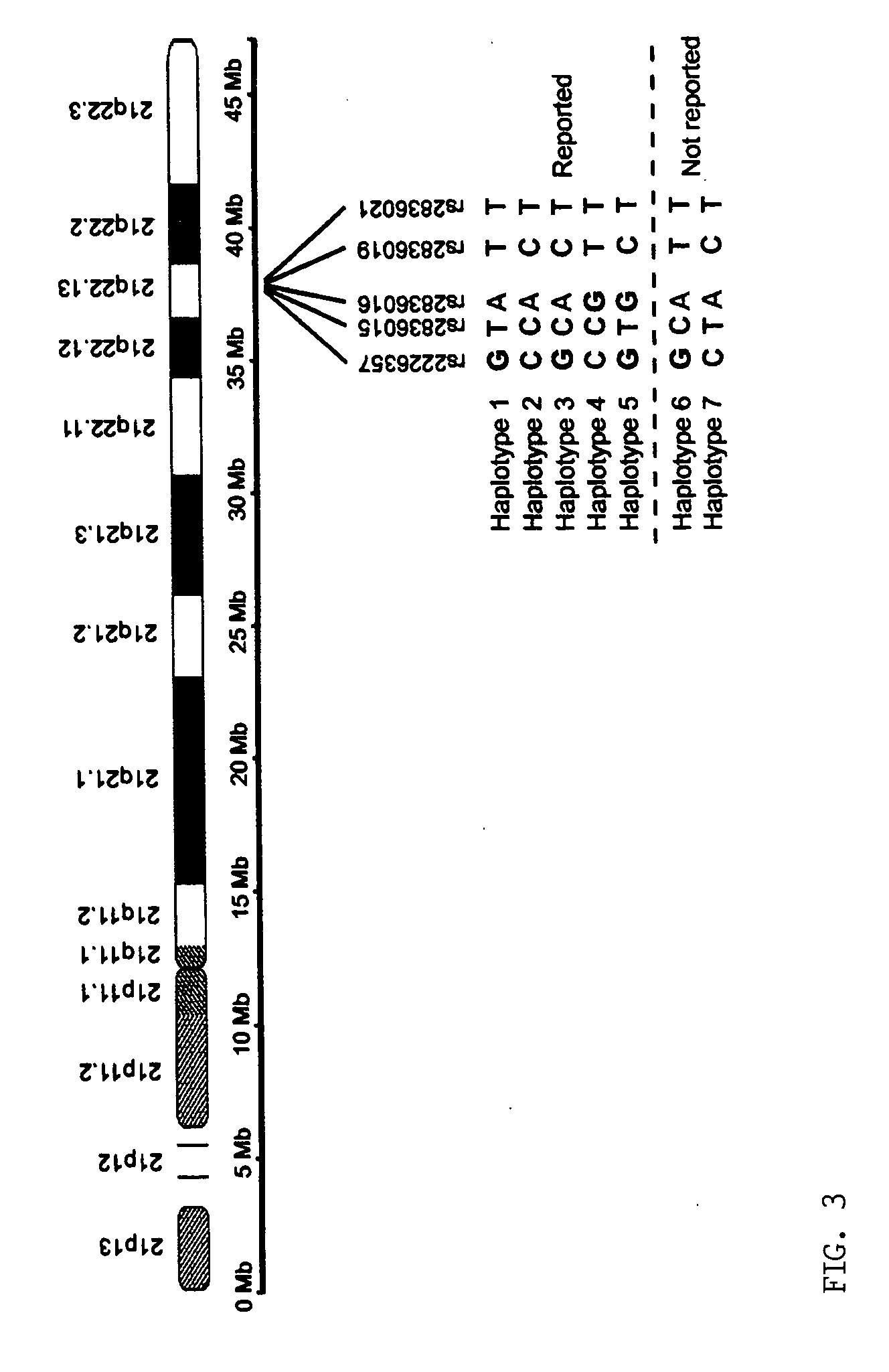Microdissection-based methods for determining genomic features of single chromosomes
a single chromosome and genomic feature technology, applied in the field of microdissection-based methods for determining genomic features of single chromosomes, can solve the problems of complicated, difficult to determine the genomic origin of cancer chromosome abnormalities, and limited strategy, and achieve the effect of quick determination of snp haplotypes and facilitate both individual- and population-based genetic association studies
- Summary
- Abstract
- Description
- Claims
- Application Information
AI Technical Summary
Benefits of technology
Problems solved by technology
Method used
Image
Examples
example 1
Determining Single Nucleotide Polymorphism (SNP) Haplotypes Using Dissected Single Chromosomes
[0035] This example describes the unambiguous determination of SNP haplotypes of a selected chromosome region using a technique according to the present invention. The disclosed technique includes the steps of single chromosome microdissection, universal DNA modification, and direct analysis of amplified single-chromosome DNA by primer extension.
[0036] The inventors analyzed the haplotypes of 14 SNP loci across the long arm of chromosome 21 (21q) in five normal Caucasians, including three unrelated individuals, a 5 mother and her son. Briefly, the inventors isolated 10 single-copy 21qs from each individual in five cultured metaphase peripheral blood cells by chromosome microdissection and amplified each individual 21q using modified degenerate oligonucleotide primed PCR (DOP-PCR). The quality of the dissection and amplification was evaluated by fluorescence in situ hybridization (FISH), i...
example 2
Characterization of Visible Regions of Normal Chromosome 21
[0046] This example illustrates a method according to the invention for haplotype determination of a human chromosome, specifically, human chromosome 21 [Hattori, et al., Nature 405: 311-321 (2000)]. The strategy involves several technical steps, including microdissection of chromosome regions, universal amplification of dissected DNA, reverse FISH for identification of the genomic origins of the chromosome regions, region-specific genomic DNA / gene array and genome-wide SNP array analysis. Single copies of dissected chromosome 21 may be obtained from a transformed normal lymphoblast cell line. A suitable cell line is GM 03657 (Coriell Institute; normal karyotype of 46,XY).
[0047] Metaphase cells are spread on clean 25×50 mm coverslips and G-banded for microdissection, as described in our previous studies [Kao, et al., Proc. Natl. Acad. Sci. U.S.A. 88: 1844-1848 (1991)]. The chromosome and the chromosome region to be dissect...
example 3
Characterization of Lymphoma-Specific Chromosome Abnormalities
[0054] Lymphomas are a group of heterogeneous hematological malignancies which often show chromosome aberrations. Certain lymphoma-specific chromosome abnormalities have been identified, such as t(8;14)(q24;q32) and t(11;14)(q13;q32) translocations in Burkitt lymphoma and Mantle cell lymphoma, respectively. However, the genomic features of many other clonal chromosome aberrations that are frequently seen in lymphomas, particularly marker chromosomes, remain unknown. Such aberrations can be readily characterized by the invention. In this example, the inventors characterized two cytogenetically undistinguishable chromosome deletions in only two cells from two unrelated pediatric patients, respectively, to demonstrate the proof of principle. This example involves several technical steps, including microdissection of chromosome regions, universal amplification of dissected DNA, reverse FISH for identification of the genomic ...
PUM
| Property | Measurement | Unit |
|---|---|---|
| temperature | aaaaa | aaaaa |
| size | aaaaa | aaaaa |
| reverse fluorescence in | aaaaa | aaaaa |
Abstract
Description
Claims
Application Information
 Login to View More
Login to View More - R&D
- Intellectual Property
- Life Sciences
- Materials
- Tech Scout
- Unparalleled Data Quality
- Higher Quality Content
- 60% Fewer Hallucinations
Browse by: Latest US Patents, China's latest patents, Technical Efficacy Thesaurus, Application Domain, Technology Topic, Popular Technical Reports.
© 2025 PatSnap. All rights reserved.Legal|Privacy policy|Modern Slavery Act Transparency Statement|Sitemap|About US| Contact US: help@patsnap.com



